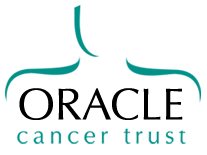Revealing Insights into Head and Neck Cancer through the Get Data Out Programme

To help us understand Head and Neck cancer, it is important to have access to comprehensive and accurate data. The Get Data Out programme, initiated by the National Cancer Registration and Analysis Service (NCRAS), focuses on generating statistics for various groups of cancer patients, offering insights into incidence, diagnosis, treatments, and survival rates.
The Get Out Programme has useful data for Head and Neck cancer patients in the UK. This cohort excludes cancers of the thyroid, eye, bones of the head, and lymph nodes. Additionally, it only includes primary cancers, disregarding metastatic cases. The specific types of Head and Neck cancers included in this cohort are the external lip, oral cavity, oropharynx (including the base of tongue, soft palate, and tonsils), major salivary glands, larynx (including the anterior surface of the epiglottis), nasopharynx, hypopharynx (including the piriform sinus), other and ill-defined sites in the lip, oral cavity, and pharynx, nasal cavity and sinus, and middle ear.
An analysis of the data reveals that late-stage diagnosis (stages 3-4) appears to be more prominent than early-stage diagnosis (stages 1-2) for most types of Head and Neck cancer. This finding emphasizes the importance of early detection and underscores the need for enhanced awareness and screening initiatives.
According to the Get Data Out programme's findings for the year 2020, there were a total of 10,020 reported cases of Head and Neck cancer. The following article will highlight the three most common types of Head and Neck cancer, along with their key characteristics.
Oropharynx (including base of tongue, soft palate, and tonsils):
- This was the most common type of Head and Neck cancer, accounting for 3,667 cases.
- More than half of these cases were diagnosed in individuals aged 60 years and above.
- Approximately 25% of these cases were diagnosed at stage 4, highlighting the urgency of early detection efforts.
Oral cavity:
- The second most common type, oral cavity cancer, comprised 2,775 cases.
- Over a third of the patients affected by oral cavity cancer were aged 70 years and above.
- Alarmingly, nearly 70% of these cases were diagnosed at stage 4, indicating a need for improved awareness and timely screenings.
Surface of epiglottis:
- The third most common type, with 1,577 cases, was cancer of the surface of the epiglottis.
- Approximately 40% of patients diagnosed with this type of cancer were aged 70 years and above.
- Disturbingly, more than 25% of these cases were detected at stage 4, underscoring the significance of early intervention.
The Get Data Out programme by NCRAS has played a role in communicating valuable information about various types of cancer, including Head and Neck cancer. By providing in-depth and anonymous data analysis, this programme aims to support researchers, as well as inform the public and patients. Through its comprehensive findings, the programme reveals that late-stage diagnosis is a prevailing issue in Head and Neck cancer.

